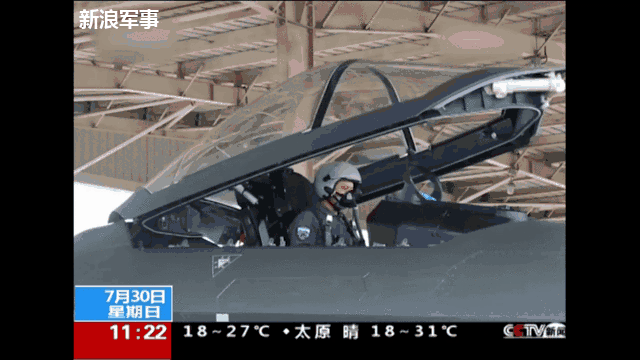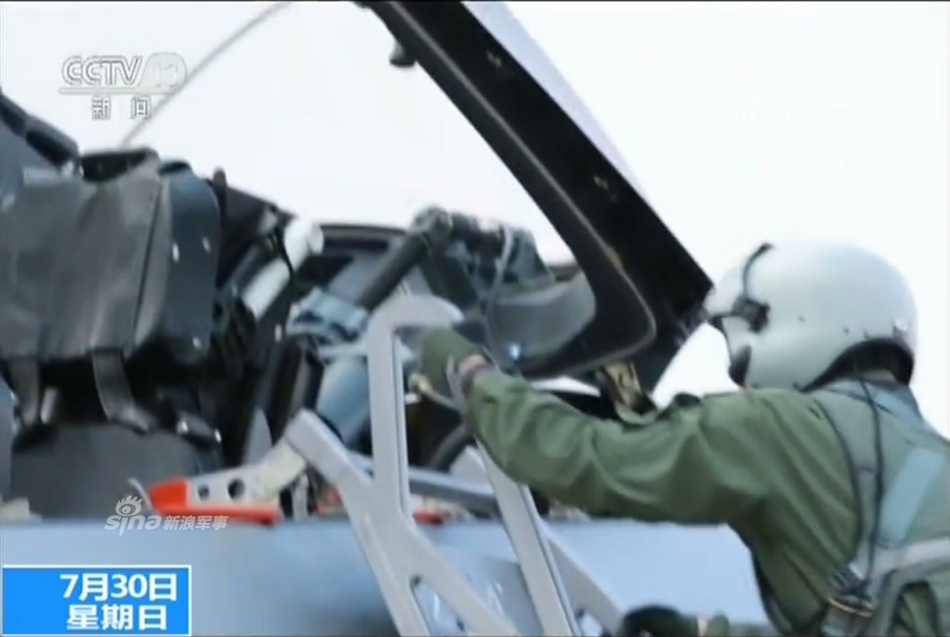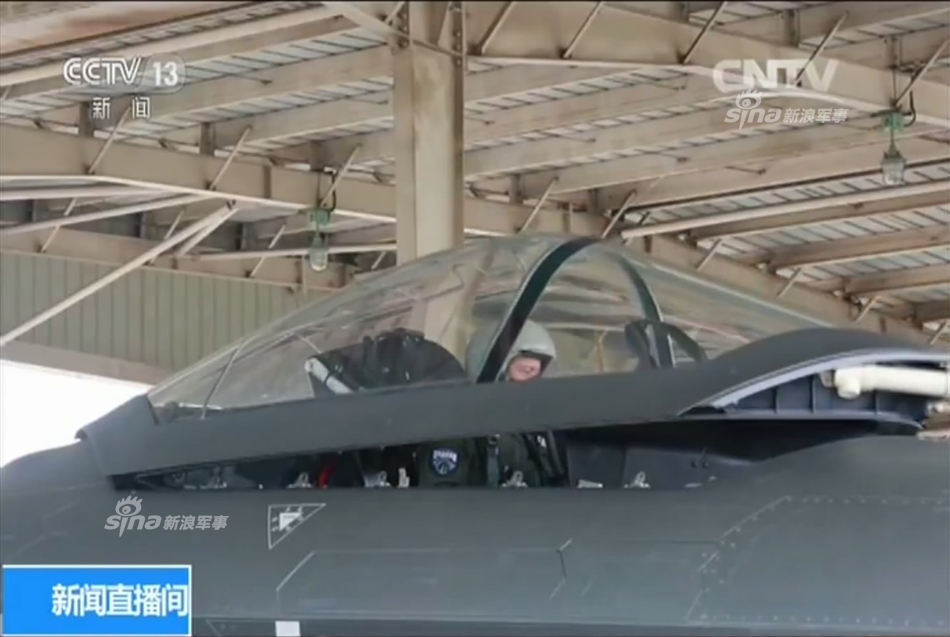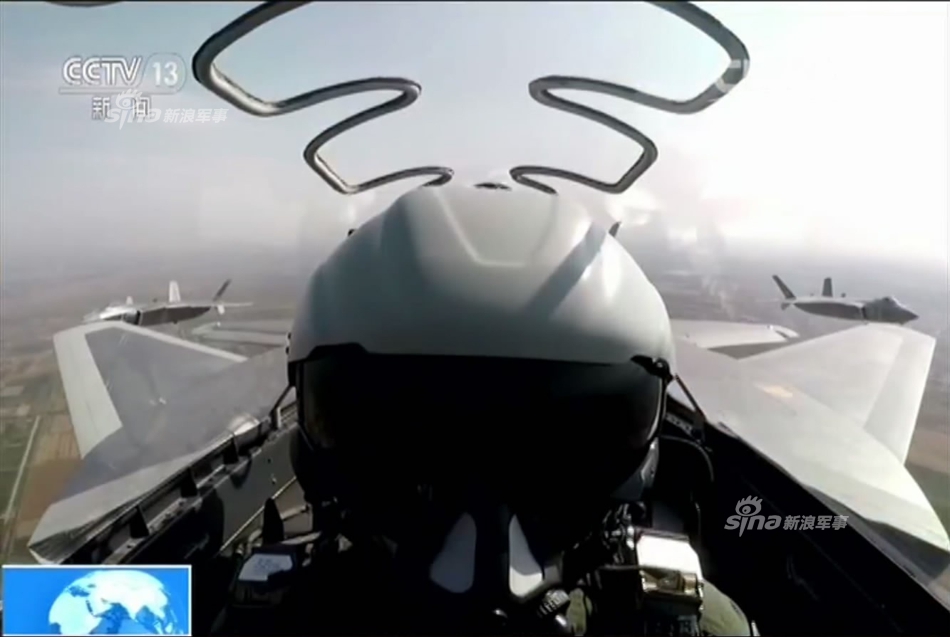Here is Henri K take on the J20 Pilot Zhang Hao interview. the interesting part is J 20 can create ghost plane to spoof the opfor. And J20 can launch attack beyond the detection range of the enemy
So all those rumor about PLXX might be true
For the second time since its maiden flight six-and-a-half years ago,
J-20 , the latest generation of Chinese fighter aircraft, was officially in front of the big screen on Sunday, July 30 , Marching to the Zhurihe Training Center on the occasion of the 90th anniversary of the founding of the People's Liberation Army (PLA).
Three aircraft, in two-tone livery digitalized, traveled the skies of Inner Mongolia in front of Chinese President XI Jinping and the 12,000 soldiers participating in the military parade.
In addition to the images taken by other aircraft, the cameras installed inside the cockpit of J-20 also sent back some clichés both interesting and unpublished.
Two J-20 take-off together for the parade (Image: Xinhua Video)
According to the commentator of the report broadcast live in front of millions of Chinese viewers, J-20 is "a 4th generation stealth supersonic combat aircraft, capable of deceiving radar (enemies) and performing very low maneuvers Altitude, and destroy enemies even before they see it. "
An official definition that highlights two of the characteristics of aircraft of this type - very low observability and maneuverability - and also the main tactic of J-20, namely to use its stealth to launch offensive beyond the Detection range of enemy aircraft.
But if these comments may seem somewhat banal, although official, the elements given by two pilots of J-20 who were interviewed will allow us to understand more this plane previously kept in secret.
Once in a supersonic regime, he entered his kingdom
(一 进入 了 超音速 就是 它 的 天下 了)
"Its maneuverability is greatly improved compared to previous generation aircraft, it can be said to be agile as a rabbit," said ZHANG Hao (张昊), pilot of the J-20 at the top of training, "His performance in subsonic regime Is not so bad, and once in supersonic regime, he entered his kingdom. "
"Thanks to the aircraft's many on-board sensors and advanced data fusion, J-20's level of automation is very high," adds ZHANG, "The battlefield has become more and more transparent to us. "
ZHANG Hao (top) and TANG Hai Ning, J-20 drivers (Images: CCTV-13)
The young ZHANG winger, Tang Hai Ning (汤海宁), says that today's J-20 pilots are all capable of flying on three different types of new generation fighter aircraft.
The J-20 squadron today is also equipped with other models of fighter, such as the new J-16fighter-bomber and the J-10C combat aircraft . This mixture promotes brainstorming of pilots, which allows to refine the tactics of air combat of each other.
When TANG talks about J-20 piloting in the somewhat peculiar weather conditions in Inner Mongolia, one reads through his words that the aircraft is sensitive and very reactive, forcing the pilots to maneuver even finer than usual .
Apart from these direct testimonies of fighter pilots, the televised report of the parade also revealed several interesting details.
The first concerns the helmet used by the J-20 pilots, which is different from those currently in service on other Chinese aircraft.
It is in fact the lightweight protective helmet
TK-31 developed by the subsidiary ALI of the Chinese aircraft manufacturer AVIC, already exposed at the last aviation exhibition of Zhuhai.
Knowing that this helmet is also used by pilot students flying on new Chinese advanced training aircraft, such as
JL-9 and
JL-10 , it is therefore likely that the TK-31 is only the training helmet of J-20 and not the HMDS type, a technology already widely used on J-10x and J-11x fighter aircraft for example.
Apart from the pilots' helmets, it was also noticed that the J-20s scouting in Zhurihe, the largest integrated training center in Asia with its 1,066 square kilometers of surface area and located 200 km from the Mongolian border, Are always equipped with Lüneberg lens, designed to significantly increase the SER of the carrier.
Is this a security measure, to prevent the J-20 radar signature from being measured by a third party at this very remote location in China, or a measure by necessity, Air traffic control can not detect the aircraft at a greater distance?
Each J-20 wore a Lüneberg lens to increase its signature SER (Image: Xinhua Video, East Pendulum)
The last detail concerns the J-20 pilot field of view. As a dual configuration aircraft such as the J-10, the first non-rigorous comparison shows that the J-20 pilot has a better field of view to his lateral rear-end than J-10. This is due to the ducks which are installed on the same plane as the wing, in slightly positive dihedral shape to preserve the aerodynamic advantage of such a configuration.
Although the WVR fight no longer seems to be the preferred tactic of J-20, but better visibility always contributes to the pilot's awareness of the situation and therefore the overall survival.











